Beyond Doom & Guilt-Trips: How Do We Drive Real Adoption of Better Behaviours and Solutions?
Written By Anne-Marie BrouilletteAt this point, we've all seen it—apocalyptic campaigns, over-the-top green branding, and big promises. Folks are starting to ask: Is any business actually “saving the planet”? There’s a lot more skepticism and avoidance out there.
People are getting frustrated. Marketing often misses the mark, and ESG gets brushed off as a side quest instead of a genuine shift in operations. Even words like “sustainability” and “ESG” are starting to lose their meaning.
So, what’s next? How do we actually get people on board with products and services that truly make a difference for the planet?
Understanding What Really Motivates Us
Sure, we’d love to think everyone will jump on the eco-friendly bandwagon because they care about the planet. While it’s now clear that Gen Z is leading in eco-friendly buying habits, let’s be real—most people make choices based on day-to-day priorities: convenience, status, saving money, and feeling like they belong. Conscious brands get this, and make these motivators the core of their message.
If sustainability becomes a nice bonus—rather than the whole pitch—adoption goes way up. The trick is to meet folks where they’re at and invite them to join the journey, rather than asking them to completely change overnight.
Using Behavioural Insights in Brand Positioning
Smart brands lean on proven behavioural science strategies, like:
Social Norming: People look to those around them to guide behaviour. Brands and businesses can show that sustainable choices are the new normal—and increasingly popular.
Aspirational Identity: Everyone wants to stand out as smart or ahead of the curve. Framing sustainable options as stylish, savvy, or cutting-edge lets people express their values and identity.
Ease of Use: Adoption skyrockets when things are easy. Services like “one-tap returns” or “zero hassle” take the friction out of making sustainable choices.
Rewards: Everyone likes perks. Clear savings, incentives, or rewards encourage habits like bringing back used items, repairing, or choosing refurbished products.
Most importantly, successful brands make the desired behaviours feel aspirational and identity-driven—helping Canadians feel smart, positive, and in sync with a modern, mindful lifestyle. When sustainable choices are easy and genuinely appealing, real change follows.
This kind of marketing has been overused by extractive brands, so let’s refocus: how can it help move us towards a truly circular economy?
Shifting the Story
Effective communication goes beyond environmental messaging by weaving innovation into everyday life. The best stories solve practical problems people care about: saving time, boosting health, saving money, or making life easier.
If any of these areas still feel like hurdles for your company, ask yourself—and your team: How can we fix that? Are there grants or supports available to help us innovate?
Real user experiences and testimonials build trust and emotional connection. Subtle reminders of positive impact reinforce why sustainable choices matter, without overwhelming people with guilt or far-off global issues.
The best messages are clear and straightforward, lowering barriers for everyone. Visuals and storytelling make the innovation feel accessible and part of regular life—not something niche or burdensome.
Skip the jargon and sacrifice talk—show your solution as an upgrade.
What’s a Purpose-Driven Mission, Anyway?
Purpose-driven brands ground their storytelling in everyday life, making sure all claims are backed up by solid evidence—both qualitative and quantitative.
Some examples:
Retail
Empower customers to make smart, stylish choices—where sustainability naturally fits into their everyday lives. You showcase how your products help people look and feel their best, while also reducing waste or carbon footprint in ways you can actually measure and share.
Manufacturer
Present your products as the smart choice for companies aiming to lower costs, highlighting circular operations and efficiency as the path forward. Responsible practices seamlessly improve business. And when it’s time to back things up, you can show reduced energy use, fewer emissions, or other concrete impacts with real data—not just promises.
Agri-Food
Celebrate flavour, health, and community—demonstrating how sustainable eating is enjoyable and accessible to all. Behind the scenes, you’re prepared to share numbers on things like water saved or emissions cut from farm to plate, proving your approach adds up, but always as supporting evidence to your main story.
Trust Makes (or Breaks) a Brand
Let’s be honest—trust is everything these days. Radical transparency doesn’t just look good; it’s expected.
Canadians want to know about your materials, your process, and your commitment to improvement. The more open you are, the less room there is for doubt.
That’s why your marketing and creative teams need to be talking to each other—and to business and product development—so you can clearly communicate what motivates people to choose you. This isn’t just good for your image; it can actually spark fresh innovations that make life easier across the board.
Canadians are educating themselves—and thanks to apps that track how sustainable and safe products are, greenwashing just doesn’t cut it anymore. New laws like Canada’s C-59 push brands to step up.
The best brands don’t rely on guilt or empty promises. They keep it real: Is your product more convenient? Better value? Is the impact measurable—how much?
Honesty wins. Instead of putting sustainability in bold every time, make it part of your bigger story. Focus on quality, innovation, and stellar experiences, with purpose at the core. When your brand is built on a genuine, purpose-driven foundation—and you can back up your claims—people feel the difference.
So, track, trace, and validate every move you make. Communicate it clearly.
When sustainability is baked into your brand’s identity—not tacked on as an afterthought—your story becomes more credible, engaging, and inspiring.
Connect with Collective Matter, let’s start with a chat, to explore how your business can lead with purpose and create lasting impact in your industry.
SOURCES
Yusoff, N., He, H., Nimri, R., Wang, Y., Yang, X., Zahan, M., Ahmad, S., Sharma, M., Sari, N., Amoako, G., Dzogbenuku, R., & Abubakari, A. (2023). Drivers of green purchasing behaviour: a systematic review. Frontiers in Psychology.
White, K., Hardisty, D. J., & Habib, R. (2019, July). The Elusive Green Consumer. Harvard Business Review.
Edelman. (2025). Edelman Trust Barometer 2025: Canada Report. Edelman Global.
PwC. (2024, May 14). Voice of the Consumer Survey 2024. PwC Global.



